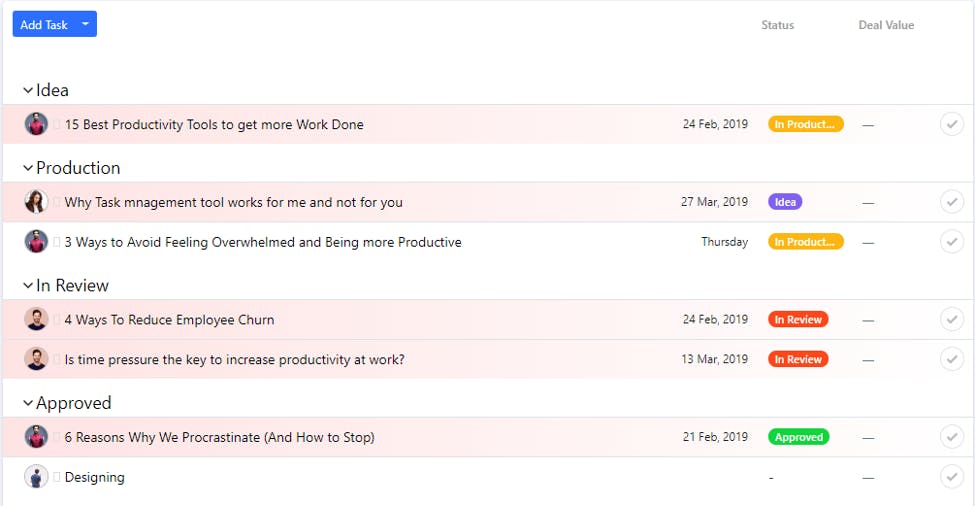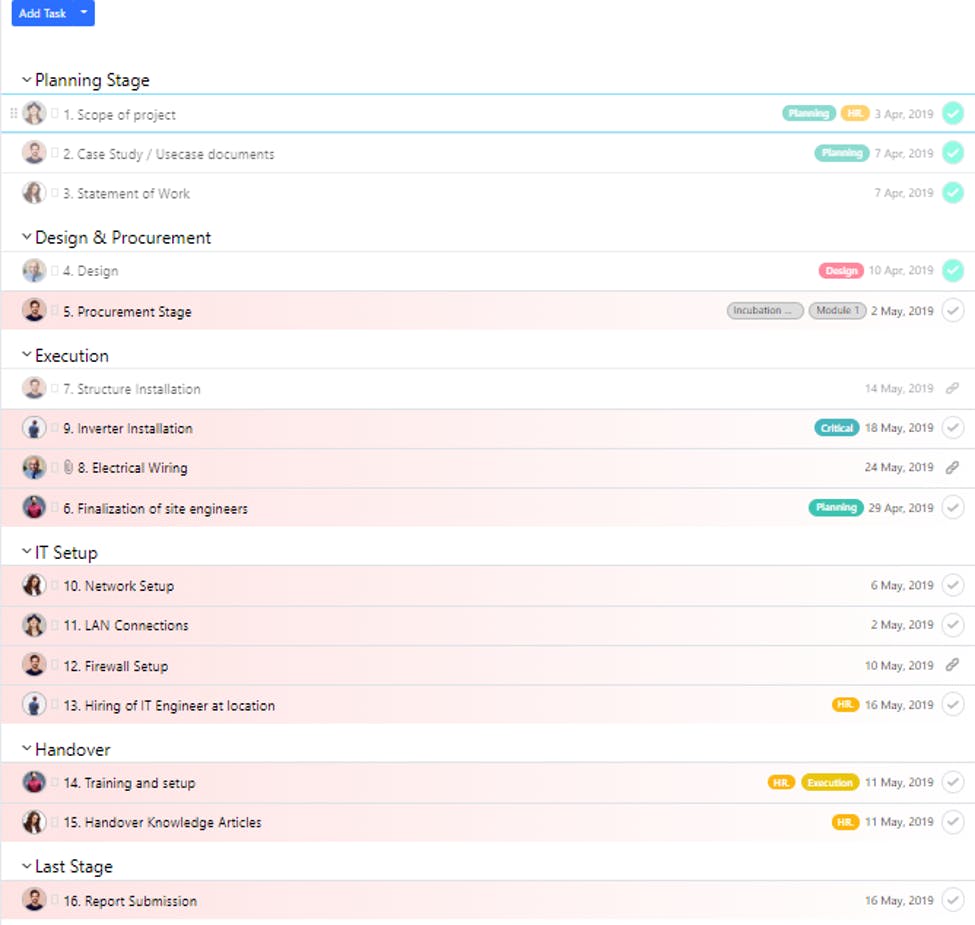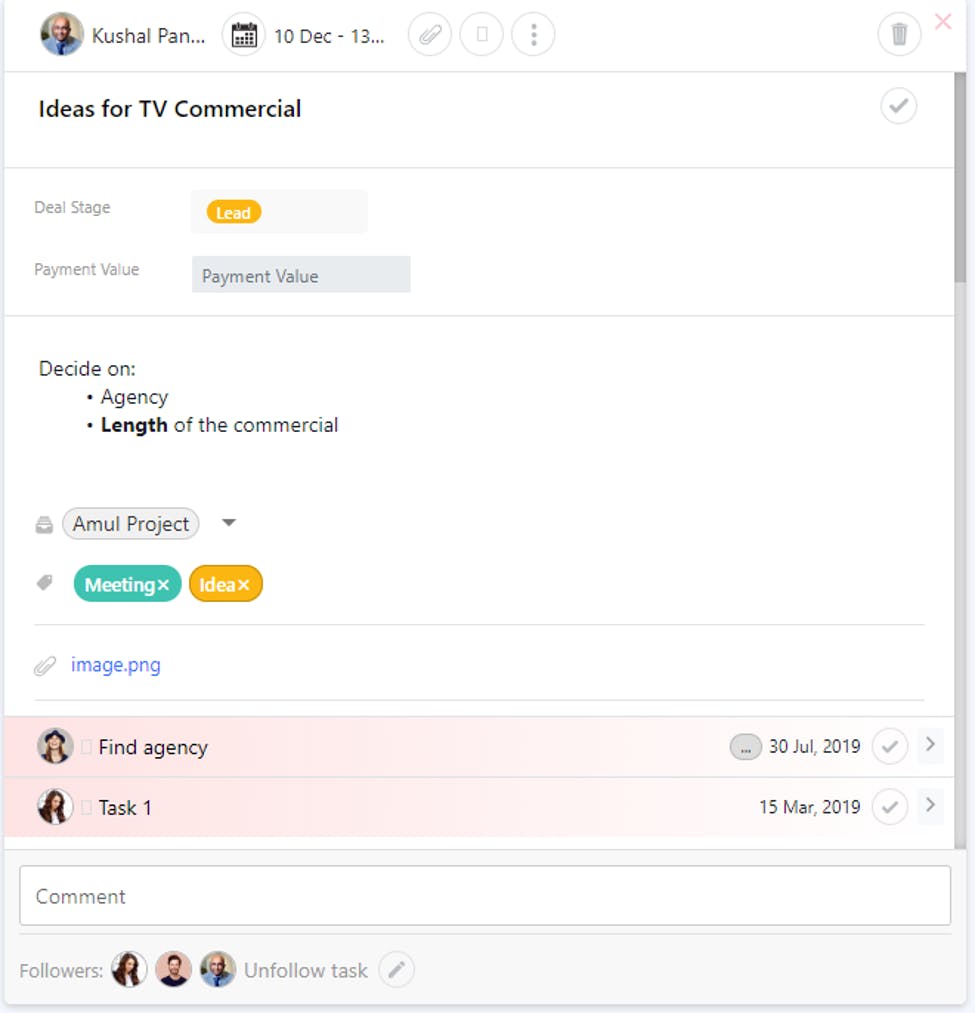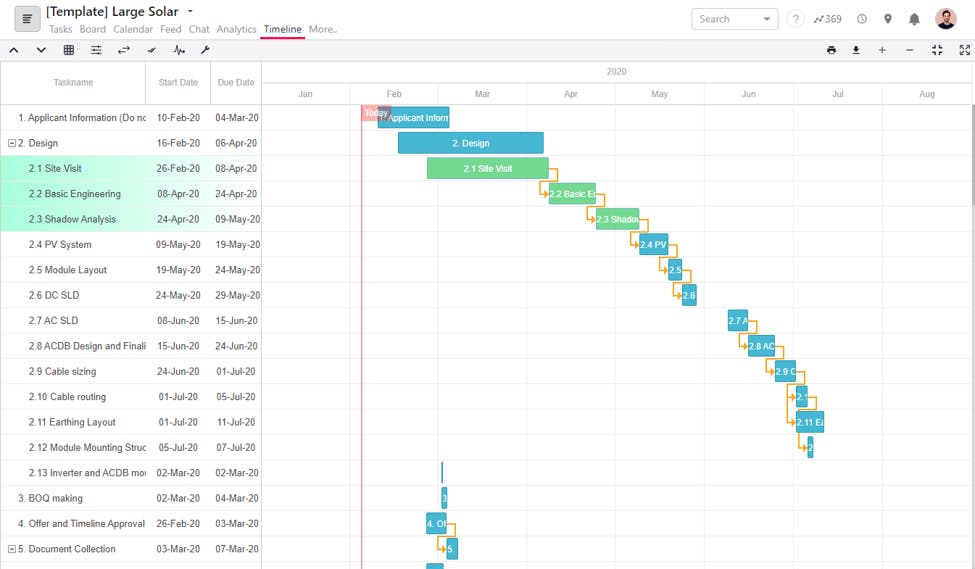 SmartTask
SmartTaskContents
What Is Project Activity In Project Management
By Deepesh KotwaniFeb 26, 2020

If you have worked on a project management plan, you must be familiar with what is an activity in project management.
Project Activity is basically a milestone, a section or a task that has many sub-tasks under it. In simple words, any activity that requires a number of tasks to be completed in order to complete that activity is known as a project activity.
To make this thing more clear, here are three examples:
1. Sections:

This is an example of project scheduling of content marketing.
First, the writer will get an idea and will make a task of the same and will add it under the ‘idea section’, if the team likes the idea, it will move to ‘production section’. Once the article is ready, the task will move to the ‘in-review section’ and finally when the assignee of the in-review task approves the task, they will move it to the ‘approved’ section.
There the stages namely- ‘Idea’, ‘production’, In-review’ and ‘Approved’ are the stages through which the task moves in order to be finished, all the stages are known as a project activity.
2. Milestones:

In this project, we have 16 tasks. The tasks are under some sections and these sections are known as milestones. .i.e if you want to complete the first stage (first milestone), you have to complete all the three tasks that lie under the ‘planning stage’ milestone.
These milestones are considered as the activity of the project. Therefore, an activity acts as a stage in the project.
In this case, each milestone (activity) contains some tasks, and once these tasks are completed, you move to the next stage. And once all the stages are completed, it will lead to the completion of the project.
Each activity (milestone) has a start and an end date. Therefore the activity is to be completed within the defined deadline for the project to be completed on time.
3. Subtasks:

As a mixture of task management software, CRM software and project management software, SmartTask lets you add subtasks to the main task as a feature among the tons of features that it provides.
Here, the main task is to find ideas for a TV commercial, but in order to complete this task, you need to first find an agency first and you have to make the budget too. Therefore this task cannot be completed unless and until the sub-tasks are completed and the completion of these subtasks will lead to the completion of the main task.
Thus, the main task is the activity here and the subtasks are the actions needed to complete this activity.
When you are in the project planning stage, you must ensure that you are clearly defining all the activities and the actions(tasks) that are needed to be completed in order to complete the activity so as to ensure the fruitful completion of the project.
As you are finished planning the activities and the actions, now you have to sequence them. i.e. you have to put the activities in an appropriate order.
Once you have sequenced the activities, you are ready to track and manage them. These types of projects are usually tracked using a network diagram or a collaborative Gantt chart. These charts represent all the activities and the actions using horizontal bars that represent the length and duration. You can choose any according to your project vision statement.
The following is an example of a Gantt chart:

How to plan and schedule project activities:
According to the PMBOK® guide, the five-time management processes of the activity list are as follows:
- Sequence Activities
- Estimate Activity Resources
- Estimate Activity Durations
1. Set up activities:
The first step is to define how many tasks and actions are required to achieve the project objectives. The input for this process is known as the project deliverables statement.
All the activities and actions that you will finalize in this stage will be used to prepare the project schedule. Before you assign the actions to team members, you should save the project schedule as a template, so that it simplifies the process the next time.
You can have a meeting with the stakeholders to accurately identify and place the milestones. Set milestones that are easily achievable so that the team can feel that they are moving forward in the project.
2. Define Relationships:
As you have listed all the activities in the previous stage, now it’s time to make a sequence of all the activities. You have to use the activities list, milestones and the project deliverable statement to prepare a proper project plan and define the relationship between all the activities and the actions.
Therefore in the second step, you have to set the dependencies between all the activities and actions. There are two types of dependencies, namely internal dependencies and external dependencies.
For example, if task 2 cannot be started until and unless task 1 is completed, task 2 is said to be dependent on task 1. This is known as internal dependency. And if a certain task depends on an external person or external resources then the task is said to be externally dependent. Ex: A certain person is required to shoot a video of the client’s building from the air, now unless the drone that was ordered comes, the task cannot be started.
These dependencies play a very important role as this shows how important a certain task is.
3. Estimate Resources:
The main part of this step is the decomposition of the resources.
As you have finalized the activities and the tasks and the dependencies, now comes the time to acquire the resources to accomplish all the actions. According to all the activities and the project scope, you have to list down all the resources that would be needed, whether they are internal or external.
You should consider taking expert judgement during the listing of all the resources. As you are tracking a budget, you should consider alternative analysis too.
You should also consider the constraint of time before estimating and preparing the resource list. Once everything is finalized, you should categorize your list according to the types of resources, priority and time.




